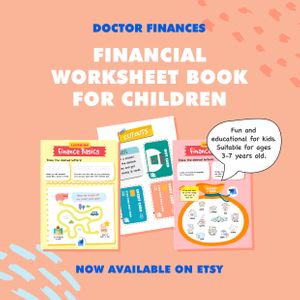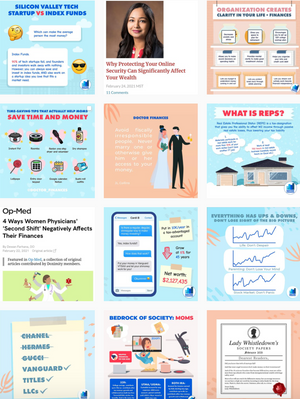If you’ve got a small business, you might’ve taken on some debt to help get that business going or to keep it going. Let’s be honest: It takes some cold, hard cash to start—and then run—a business!

Check out this list of common business expenses—and it’s not all-inclusive!
- Technology (website, apps, hiring pros to help you with technology, and so on)
- Licensing
- Insurance
- Legal fees
- Accounting fees
- Forming an entity (LLC, Partnership, Corporation)
- Office equipment (desk, chair, printer/scanner, monitors, computer, phone, etc.)
- Office supplies
- Your benefits
- Hiring and then paying that first employee
- Employee benefits
- Employee overhead costs
- Building overhead costs
- And more...
All of these can really add up. Really fast.
Not to mention that some of these expenses repeat month after month and year after year.
Since debt counts against you as a liability, how can you pay off that debt as quickly as possible while also ensuring that you can cover your monthly expenses and keep cash reserves in place to be able to operate your business now and into the future? It can be tricky to keep that balance.
Click here to learn real ways to actually save during this pandemic for your personal finance
And there’s something else to keep in mind that many small business owners never thought would be a reality:
Worldwide Pandemic.
If someone had told you 6 months ago that the world would be facing something like COVID-19, which would literally cause the world to shelter in place for weeks, you’d have thought they were crazy.
But here we are. For who knows how long.
So, to help you become business debt free, here are 10 tips to help you not only pay off that debt, but to also help get you on track with some sound financial habits that will ensure that your business is financially stable now and well into the future.

Tip 1: Set and stick to a strict monthly budget.
We all know how important a budget is personally (hence, the name personal finance), but it’s just as important—if not more important—for your business. Like we mentioned, those expenses can add up really quickly, especially those tiny ones. So before spending any money, take a breath and some time to make sure that each expenditure is necessary.
Tip 2: Decrease spending.
Once you’ve got that budget in place, be brutal and go through it item by item. Are there any expenditures you can delete or cut back on? Are there less expensive options that will still do the job, perhaps with software? You’ll be surprised at the answers you’ll find to these questions.
Tip 3: Pay just a little bit extra on your debt every month.
Just like expenses can add up quickly, paying even the smallest extra amount on your debt every month can also add up and save you literally thousands and thousands of dollars in interest over time. How can you know what’s “extra”? Refer back to steps #1 and #2!
Tip 4: Increase your revenue.
This might sound daunting, but it can be done. What are some little ways you can bring in more money?
- Incorporate some upsells.
- Add tiers to your existing sales offerings. Yes, some customers might not go for the top tier, but for those who do, that’s easy extra money to make.
- Look at the products you’re selling and see which are the most popular. Can you offer a group deal? Like buy X, get 1 free? Something like this will often get your regular customers buying more than they’d planned to get that deal. Another idea is to look into starting a membership program for your most popular services. That’s a constant revenue stream you can count on month after month.
- Ask your best customers for referrals/reviews. They already love you, and they want you to be successful!
Do some brainstorming, remembering that nothing’s off the table, and see what you can come up with. The key is to increase revenue in the least expensive ways possible.
Tip 5: Get rid of extra assets.
If you’ve got assets that aren’t adding to your business, bring in some extra cash by selling them. And remember, even the smallest amounts can add up over time. For example, many businesses are forgoing office space while in quarantine because it's just an extra expense that is not being utilized until quarantine is lifted.

Tip 6: Consider debt consolidation.
If you have debt from several lenders, look into consolidating that debt under one lender. You might decrease some interest rates (which saves you money), and it might also make tracking your monthly expenses easier. Just be sure to read all the fine print and consult with a business advisor and/or attorney to make sure this is the best step—both short- and long-term—for you.
Tip 7: Negotiate with your lenders.
If you’re having a hard time keeping up with your debt expense, see if you can negotiate lower interest rates with your lenders. It’s always worth a try, and they really do want to keep your business since it adds to their bottom line. And the worst thing that could happen? They could say no. It’s well worth the risk!
Tip 8: Talk to a small business financial advisor.
This can cost some money, but it could be the best money you spend on your business given the advisor is honest, well-vetted and knowledgeable in your area of business. A business financial advisor can help you see where you can make changes, find options you’re not seeing, help you plan month-to-month and into the future, and so many other things that will help your business survive and thrive.
Tip 9: Get an extra job to bring in some extra cash.
If you can work in some extra hours each week on a side job, that income can go straight to that business debt.
Tip 10: Cut charitable contributions.
We all love to help others, but for the short-term, and to help your business be financially safe, hold off on some of those charitable contributions, or at least decrease them for now. Yes, they do get you a tax break, but ask yourself if that tax break is really saving you as much as you think it is. Talking to your financial advisor and/or tax accountant would come in really handy here.
And here’s a bonus tip: Pay cash whenever you can so you don’t increase your debt little by little. Whether that debt is from investors, a bank or other lender, or on credit cards, it’s ALL debt.

Small Business Resource: US Small Business Administration
Another option to keep in mind as your go-to source for anything associated with operating a successful small business (including business debt) is the US Small Business Administration. And due to the severe economic ramifications of COVID-19, the SBA is currently offering two programs to help small businesses with their debt and other crucial business operations:
SBA Debt Relief Program. Here are the basics of this program as outlined on their site:
As part of our coronavirus debt relief efforts, the SBA will pay 6 months of principal, interest, and any associated fees that borrowers owe for all current 7(a), 504, and Microloans in regular servicing status as well as new 7(a), 504, and Microloans disbursed prior to September 27, 2020. This relief is not available for Paycheck Protection Program loans or Economic Injury Disaster loans. Borrowers do not need to apply for this assistance.
Paycheck Protection Program. The Paycheck Protection Program is a loan designed to provide funds for small businesses to keep their employees working. One huge aspect of this program is that loans will be forgiven if the following guidelines are followed:
- ALL employees must be kept working for 8 weeks.
- All program funds must be used for payroll, rent, mortgage interest, or utilities.

While business debt can be the last thing you want to think about as a small business owner, it’s definitely not something you want to ignore. When you handle debt smartly and responsibly, even taking baby step after baby step to decrease your business debt amount, you can get that liability off your books, getting you closer to a solid business foundation that will serve you, your employees, and your customers for years to come.





